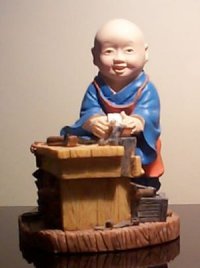
| Contents
In summary, there were thirteen 'tsung's in Cinese Buddhism, namely,
Later, Ti-lun tsung merged in Hua-yen tsung, Nirvana Sect merged in Tien-tai tsung, and She-lun tsung merged in Fa-hsien tsung. There were only eight sects in Mahayana sects. Together with Chu-she tsung and Cheng-shih tsung as Hinayana, there are 10 sects in Chinese Buddhism.
These sects can be categorized into five main streams, namely,
It must be clear that Shakyamuni Buddha did not establish these sects. These teachings evolved to accommodate varying characteristics and temperaments of all people as time goes by. In the western world, they like to categorize in other ways. They regard Chu-she, San-lun and Fa-hsien as the 'classical schools', as these schools were originated from later Indian Buddhism. Tien-tai and Hua-yen are regarded as the 'scholastic schools', as they are made in China. At last, Chan and Ching-tu are said to be the 'popular schools', because they had a more direct appeal to the common people. Certainly, it is not just one way to achieve enlightenment through study and cultivation in Buddhism, thus the development of sects is a natural trend. As all Dharmas converge to the supreme Buddhahood, each way should have no hindrance to the other. In recent years, people prefer to practice Ching-tu, i.e. Pure Land. However, some people are eager to learn more about the theories and practices of other sects. We will elaborate each sect later. However, we would like to reiterate that it is better to focus to one single sect in order to practice and cultivate effectively and efficiently. |



